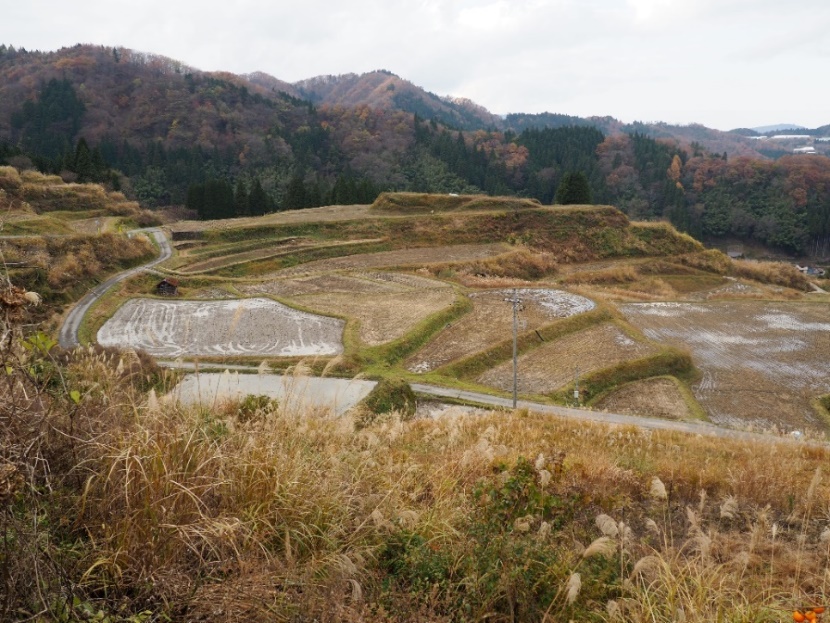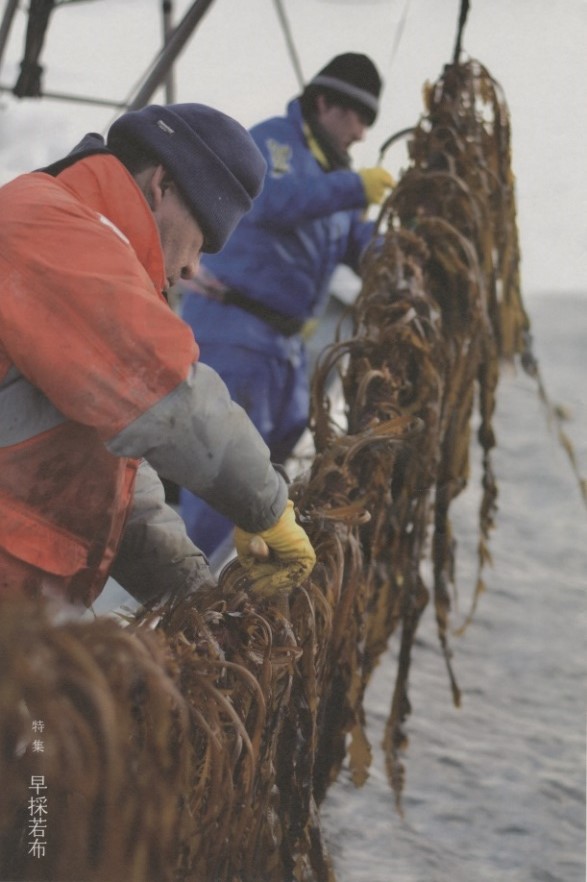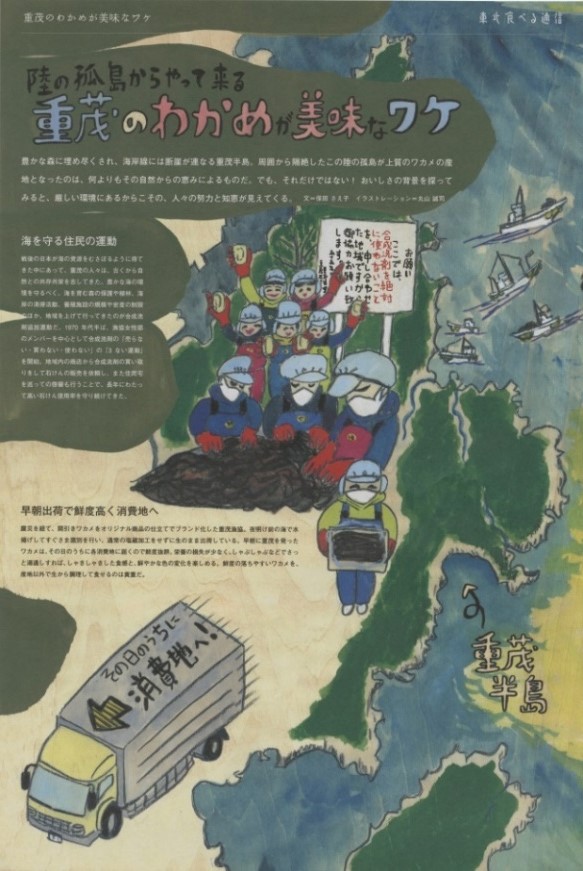Shoichiro TakezawaA Comparative Study on the Organic Agriculture in Japan and in FranceThe organic agriculture and the sustainable permanent farming have a long history in Japan, but their ratio to Japan’s total agricultural activities is limited despite the increasing interest among the Japanese consumers. Why is this restriction? Who is the more responsible for this restriction, Japanese farmers or Japanese consumers? What lesson can we get from the comparison of the Japanese cases and the French cases of the organic farming and the distribution system of its products? These are the questions that I try to answer through my study on the organic farming and its distribution system in Japan and in France. StatisticsFirstly, I show some figures to make clear the actual situation of the Japan’s organic farming. According to a report1 of the Ministry of Agriculture, Fishing and Forest, the number of the farm household engaging in the organic farming in Japan is increasing: 8,764 in 2010, 10,981 in 2012 and 11,859 in 2014. Nevertheless, its percentage to the total number of the Japanese farm households is very limited: it is only 0.5% to its total number (253,000). As a result, the area dedicated to the organic farming is limited: it is about 60.000ha in 2013, only 0.5% of the total area under cultivation in Japan (461,000ha). These ratios are very small when we compare with those of the foreign countries. The percentage of the organic farming area to the total area under cultivation in 2011 is 8.6% in Italy, 6.1% in Deutschland, 4.0% in the UK, and 3.8% in France. The French case is interesting because its ratio is doubled within 4 years: 1.9% in 2007 and 3.8% in 2011. HistoryNow I look at the history of the organic farming in Japan. It is well known that the earliest (or one of the earliest) and the most influential statement on the organic farming was pronounced by Mokichi Okada, who founded in 1935 a new religious movement called Sekai Kyuseikyo (“Church of World Missionary”). Saying that the human body that is given by the Heaven has a pure entity, but vulnerable to the artificial noxious elements like medicine and chemical fertilizer, he recommended to his followers the abstention from medicine and the organic farming. As Okada was very active in dissemination his communitarian and naturalist thought, he wrote many books and articles that gave much influence not only on his followers but also on the local intellectuals on the outside. His sect counted at its peak more than a million followers, who were engaged in the organic farming in various parts of Japan. This sect was also very eager for the missionary work in foreign countries; it holds about 300,000 adherents in Thailand, 1,000,000 in Brazil where the organic farming has been widely practiced. Another move to the organic farming in the early years was made by a small agricultural high school called Aino High School founded in 1964 in Mie Prefecture, in central Japan. Based on the Christian spirit, the motto of the school is "a love for God, a love for people, and a love for agriculture". Although this school is not so big, its students come from every part of Japan and stay in the school dormitory. The main purpose of the school is to bring up good farmers eager for the organic farming. After having finished three years’ training, its graduates are expected to return to their natal village to disseminate seeds of the organic farming. The photo 1 shows the rice field of a mountainous village of Itoshino in Hyogo Prefecture, where a graduate of this school has become the leader. The third case is Mimanata city that is famous of its disease provoked by the contamination of the sea by the industrial effluent containing organic mercury compound. As the causal Company called Chisso refused to admit the responsibility for the sea pollution and to make reparations for it to the patients, 112 patients most of whom had been small scale fishermen took legal proceedings in 1969. In 1973, they won the lawsuit and each of them got 18.000.000 yen as a compensation. As their body had been paralyzed by the mercury compound, they could not go fishing any more. Then, they decided to invest this money to the organic farming, in saying that they would never use the chemical fertilizer nor pesticide because it was these products that had provoked their illness and the sea pollution. Supported by the NPO groups, they began to sell their products like tea, orange and apple through the direct channels of distribution to the consumers living in big cities like Tokyo and Osaka. Photo 1: Rice field of Itoshino where no chemical fertilizer is used and limited quantity of pesticide is used once a year This glance over a history of the organic farming in Japan can provide us some distinguishing features of this practice. It becomes clear that the organic farming has a long history and is practiced in different parts of Japan by eager farmers. It becomes also clear that this practice is very often linked to the communitarian and naturalist ideology based on religious belief or environmental awareness. On the other hand, this practice stays sporadic and isolated, never organized into a cooperate action. The farmers generally sell, or rather, are obliged to sell their products not through the market, but through the direct and personal channels with the consumers. This kind of distribution mechanism is called sanchoku (direct selling of the agricultural products to the consumers). In France the word teikei is often used to designate this kind of channel, but this naming is completely erroneous because teikei means a cooperation among different institutions such as gyomu-teikei that means a cooperation among companies2 (If you say teikei in Japan, no one will understand you). Why is this restriction despite its long history? It is largely because of the refusal of the Japan Agricultural Cooperatives (JA) to cooperate with these farmers. Therefore, it is necessary for us to understand what JA is and why it is against the organic farming. Japan Agricultural Cooperatives (JA)JA was created in 1948 under the pressure of the Supreme Commander for the Allied Powers (SCAP) that occupied Japan after the World War II and tried the democratization of the Japanese agriculture. Prior to World War II, more than half of Japan’s cultivable land was owned by big landowners living in the cities, so that many of the farmers were but tenant farmers without land. Considering such a “feudal” land ownership system to be the base of the past fascist regime, the SCAP ordered in 1947 to divide all the farmlands possessed by big landowners and to distribute them to the small farmers. As a result, many independent farmers were born, each possessing small farmland. JA was established in 1948 under the guidance of the Supreme Commander to protect these small-scale farmers.
Graph 1: Japan’s biggest banks (2016) As JA guaranteed to sell all the agricultural products (although it sometimes sells them at a law price), farmers could get security in their life, even if their farmland stayed very small (one hectare per farm household). This is a positive side of this system. There is another and negative side of the system: farmers whose income was guaranteed became negligent in innovation such as introduction of new agricultural techniques, selective breeding and expansion of the farmland. JA has been against the organic farming because it would diminish its benefit from selling the agrochemicals. This policy of JA have made farmers’ income law so that the agriculture has become unattractive to the younger generation. These are the main reasons why the outflow and the aging of the rural population have never stopped (in 2016, the average age of farmers is 66 years old). Now, many villages, especially villages in a mountainous district called genkai shuraku (literally “village-limit”, village whose existence is difficult because of the aging of its population) are abandoned day by day. GovernmentSince 2000, under the pressure of the foreign countries and the growing influence of globalization, cheap agricultural products have been introduced on Japan’s markets, so that the innovation in agriculture has been recognized as an inevitable task. The Japanese government required farmers to innovate their farming in order to cultivate international competitiveness, of which the enlargement of the organic farming was considered as a privileged target. In 1999, the government modified the Japan Agricultural Standard (JIS Agriculture) to legislate the standards concerning the organic agriculture and its products. In the same year, the government enact a “Law for the Promotion of the Sustainable Agriculture”. And in 2006, the government enacted a new one “Law for the Promotion of the Organic Agriculture”. Despite these repeated legislations, Japanese policy targeting the promotion of the organic farming has a fundamental defect. As Sawanobori Sanae said in her article3, Japan’s agricultural policy to promote organic farming is but a verbal policy, without any executive ability based on the financial support. This is very probably because of the resistance of JA that is against diversification of the cultivation technics and the decrease of the sales of the chemical products. This conservatism of JA comes certainly from a consideration in securing a profit to pay salary to its 220,000 staff members. As said above, JA is a gigantesque organization and is very powerful in the rural area, because it the only bank and the only insurance in small towns. So, the farmers engaging in the organic farming take a tactic of not a battle but a compromise with it: instead of challenging the old distribution system monopolized by JA, they sell their products through the direct and personal channels to the consumers such as small sanchoku market or web site. This tactic comes not only from a fear of JA as a powerful political pressure group but also from the geographical condition of the Japanese agriculture. As Japan is a mountainous country, the cultivable area is less than 25% of the total land surface. Consequently, one farmland adjoins another and a farmer who is eager for the organic farming will never be able to practice it if the next farmer do not accept to engage in it. So, it is generally the case that the organic farming is realized in the small mountainous area, not in the open field where the agreement is very difficult to obtain. It is evident that the Japanese consumers are more and more attracted to the products of the organic farming. According to the above cited report by the Ministry of Agriculture., 44 % of the consumers buy more or less these products and 55% have an intention to buy them; meanwhile 70% of them say that it is difficult to find these products in the daily market. Thus, we can say that the organic farming in Japan remains and will remain sporadic, inorganized and underdeveloped, if the drastic change will not occur. ChallengesMany practices have been done to change such a situation dominated by an out-of-date distribution system of the agricultural products. One of them is the trial done by Green Coop Fukuoka established in Fukuoka city, in Kyushu island. Created in the 1950’s to fulfill the needs of the employees working in the US Air Force Base4, it opened its door to the citizens in the middle 1960’s. With its 400 thousand members, this cooperative is one of the biggest and the most active organizations in Japan that promote the organic farming. It now covers all the aspects of the human life, from the birth to the death. But its main objective is to strengthen the community tie by linking the consumers and the farmers, one consumer and another consumer. To realize that, it recommends a formation of the consumers’ group to discuss daily problems and to help each other in the case of a crisis. Another example is the case of a NPO called Taberu Tsushin that means “Eat and Communication”. This organization was launched in 2014 by a young man living in Iwate Prefecture who experienced the 2011 Tohoku Earthquake. Its objective is to support the fishermen and farmers who had lost everything because of the tsunami by selling their products with a reasonable price. It aims also to create a network between the consumers living in cities and the producers living in rural areas. The consumers pay 1700 yen (about 14 euros) per month to get agricultural products and a newsletter. The newness of this organization is not simply to deliver directly organic agricultural products to consumers, but to send a pamphlet rich in photos and information of producers to encourage consumers to know better the rural community where these goods are produced (photo 2, 3). It could soon win many supporters throughout Japan and its success has evoked a lot of sympathy so that 38 affiliated NPOs were born within two years in different parts of Japan. Its organizer hopes that it contributes to create a kind of community covering consumers and producers and that people living in cities can find a refuse when a catastrophe like great earthquake will attack Tokyo in the future.
Photo 2 & 3: Newsletter of “Eat and Communication” concerning wakame (Left: fishermen cultivating wakame, Right: drawing to show why these wakame are so delicious) Comparative StudyAs these examples show, we find not a few attempts to create new distribution mechanisms of agricultural products in Japan. Nevertheless, we must recognize some problems there: these attempts are generally made on the initiative of the consumer; and there is no nationwide network among the farmers engaging in the sustainable farming, although their number is increasing. It is therefore the case that their influence remains marginal in Japan’s agricultural system and the consumers who want to purchase safe and low-cost organic food face some difficulties to get it. In France, on the contrary, there is a long history of farmers’ movements like the Fédération Nationale des Syndicats d'Exploitants Agricoles (FNSEA) and the Confédération Paysanne that are very active and exert large influence not only on the farmers but also on French society. The statements of these organizations seem more than more accepted by the French public. Consequently, the farmers enjoy larger freedom in farming and in distribution of their products than Japanese farmers, and many cooperatives and supermarkets have engaged in the deal of organic farming products. Moreover, there are several other reasons for the development of organic agriculture in France. First, France has a long history of organic farming: the innovative attempts taken by Lemaire-Boucher and Nature et Progrès have been appreciated since the 1960's. Second, the French government is eager for the dissemination of organic farming and established three times a five-year plan for promoting organic agriculture since 1998. Third, there are different kinds of distribution network of organic products in France like Biocoop, Bio c’Bon and AMAP. It is especially AMAP that attract me the most, for it shows some similarities to the attempts carried out in Japan to distribute directly agricultural products of the organic farming to the consumers5. Although there are some criticisms on the rapid expansion and the industrialization of organic farming, this practice seems to be developing steadily in France. Therefore, to understand the history of organic farming and its distribution system in France, notably its development in recent years, will be helpful for us not only for depicting a future image of organic agriculture in Japan but also for providing some practical hints to change the Japan’s agriculture and its distribution system. Notes1. http://www.maff.go.jp/j/seisan/kankyo/yuuki/convention/h25/pdf/s1-1.pdf |
 |
Recherche |  |
FFJ Research Statement |  |
Shoichiro Takezawa |
| Inscrivez-vous à notre Lettre en cliquant ici |
*En cas de problème, vous pouvez aussi vous inscrire en envoyant un mail à sympa@ehess.fr, avec pour titre "subscribe ffj_french_news".










